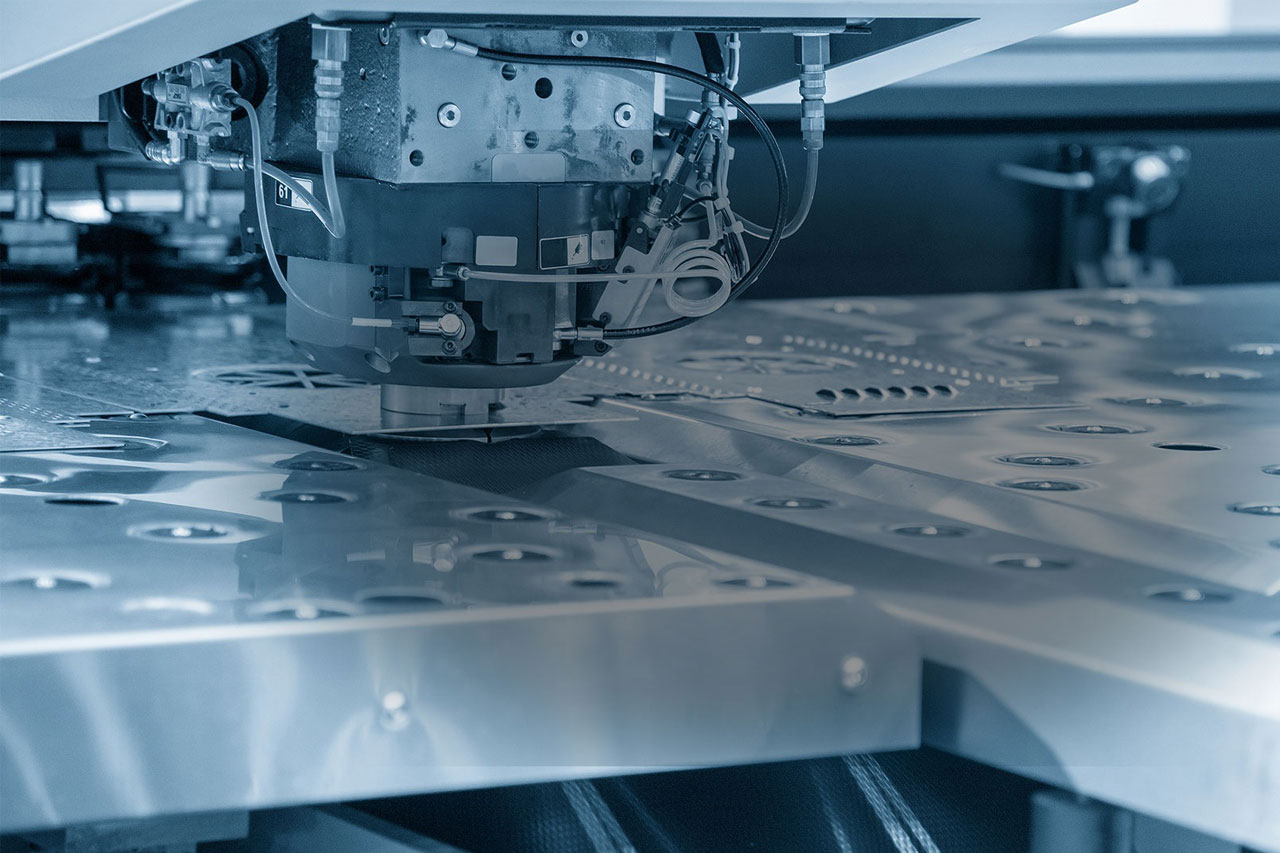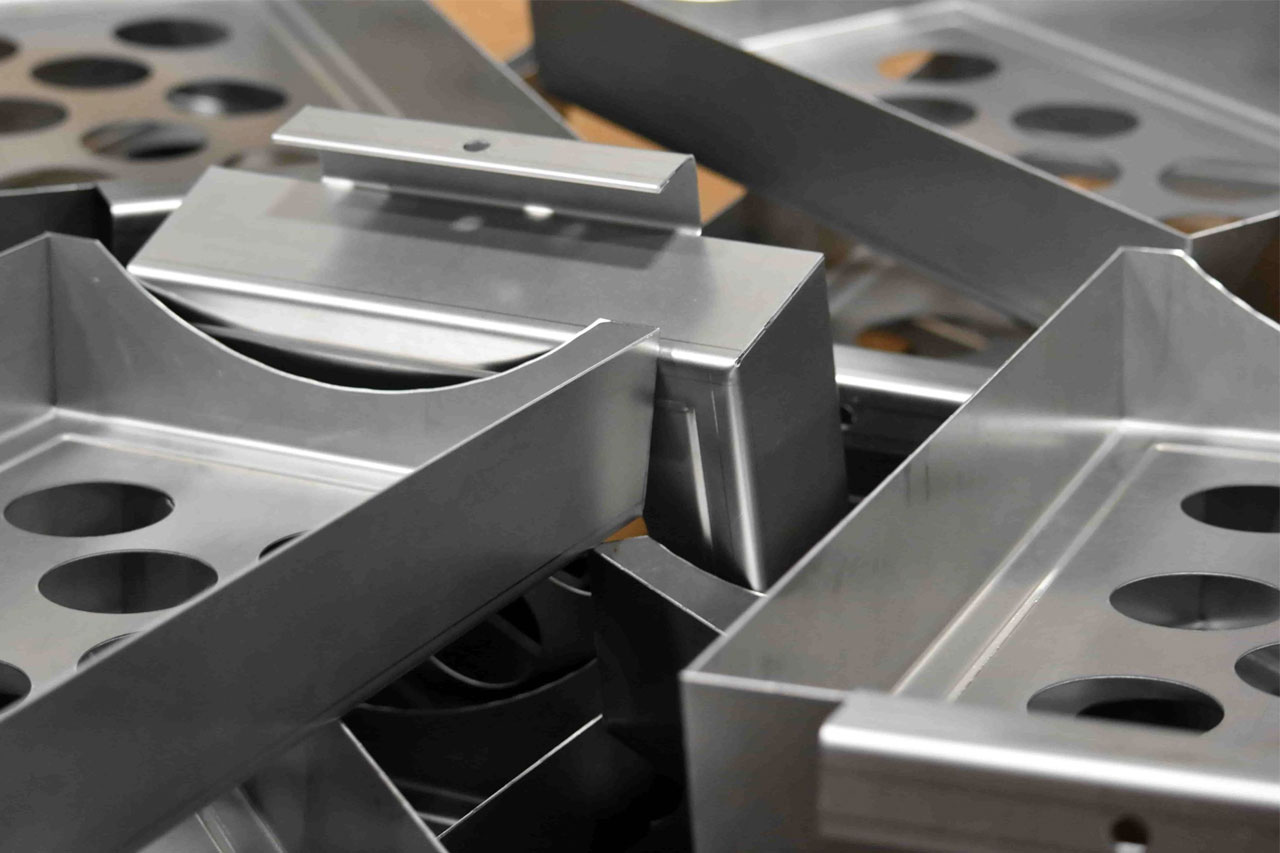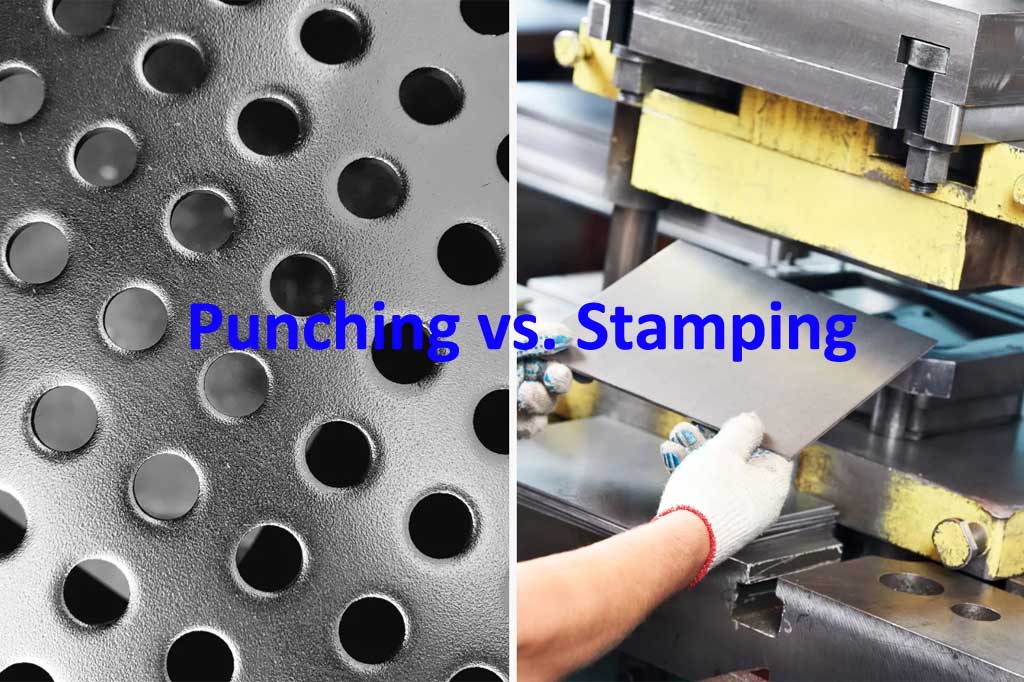In the world of metal fabrication, two commonly used processes that often get confused are metal punching and metal stamping.
Though both involve cutting and shaping metal, the methods, tools, and applications of each process differ significantly.
What Is Metal Punching?

Metal punching involves using a punch tool to cut holes or shapes in a metal sheet. The punch and die set are used to exert force on the material, creating a hole or a shape that is removed from the workpiece.
The material is typically thin and is held in place on a work surface, such as a punch press, where the tool impacts it.
Key Characteristics of Metal Punching:
- Tooling: Punching involves a punch (a hardened tool) and a die. The punch presses into the metal sheet to cut out specific shapes, such as holes or other simple geometries.
- Process: The punching machine applies a high force to the metal sheet, forcing the punch through it. The metal is either cut, pierced, or slotted based on the tool design.
- Types of Holes: Metal punching is most often used for creating holes, slots, or patterns in sheets of material, but the process can be used for other specific geometries as well.
- Common Materials: Punching is typically performed on thinner metals, such as aluminum, stainless steel, and brass.
Applications of Metal Punching:
- Small, repetitive holes or patterns: Punching is ideal for tasks like creating perforated sheets, cable trays, or mounting holes in parts.
- Mass production: Punching is efficient for high-volume production due to its speed, especially when creating a large number of identical holes or shapes.
What Is Metal Stamping?

Metal stamping is a broader process that involves shaping or forming metal by applying pressure using a die. Unlike punching, which focuses mainly on cutting out material, stamping can involve a variety of different processes, such as blanking, bending, forming, and embossing. It is an essential method for shaping metal into intricate designs and parts.
Key Characteristics of Metal Stamping:
- Tooling: Stamping uses a die (usually made of hardened steel) to form the metal into specific shapes. The die and the punch work together to press the metal into a new form.
- Process: Stamping includes several sub-processes, such as blanking, embossing, forming, bending, and coining. In stamping, a press applies high pressure to a metal sheet to shape it into the desired form.
- Variety of Shapes: Metal stamping can create a wide range of shapes, from simple geometric parts to more complex components. Unlike punching, stamping can manipulate the metal into 3D shapes, such as parts of automotive bodies, brackets, or enclosures.
- Common Materials: Like punching, stamping works best with thin metals, but it can also be used for thicker sheets. Materials used in these processes include aluminum, stainless steel, copper, brass, and various alloys.
Applications of Metal Stamping:
- Complex parts: Stamping is ideal for producing parts with complex shapes, such as automotive components, electronics housings, and consumer goods.
- Mass production: Stamping excels in high-volume runs because it can produce large quantities of parts with consistent quality and accuracy.
- Variety of processes: Stamping can produce not just cut-out parts, but also embossed, formed, or bent components, making it incredibly versatile.
5 Key Differences Between Metal Punching and Stamping
1. Process Complexity
- Punching: Primarily focuses on cutting or piercing holes in sheet metal or creating simple shapes. It is a simpler process that doesn’t alter the overall shape of the metal significantly, apart from removing material.
- Stamping: A more complex and versatile process that involves forming the material into different shapes. It can be used to create 3D parts, bend, emboss, and even bend sheet metal into more complex geometries.
2. Tooling and Dies
- Punching: Uses a punch and die tool that shears out material from the metal sheet. The die typically has one shape, and the punch creates holes or shapes by punching through the material.
- Stamping: Uses multiple dies, which can perform a variety of operations in a single stroke. Stamping tools can shape, form, cut, bend, or even emboss the material, depending on the process.
3. Product Type
- Punching: The result is typically a flat sheet with holes or small cut-out pieces. It’s ideal for perforated sheets, brackets, and components that need holes but don’t require additional shaping.
- Stamping: The result can be a wide variety of 3D shapes and components. It is often used for parts that need to be formed, bent, or shaped into more intricate designs, such as automotive parts or electrical housings.
4. Material Thickness
- Punching: Typically used for thinner materials, as it focuses on cutting or creating holes in the metal.
- Stamping: Can handle a wider range of material thicknesses, from very thin sheets to heavier gauge metals, thanks to its more forceful and diverse range of operations.
5. Production Speed
- Punching: Extremely fast for mass-producing parts that require identical holes or simple cutouts. Since the process is straightforward, it can produce high volumes quickly.
- Stamping: Also very fast, especially in mass production. However, since it is a more complex process, the cycle time can vary depending on the number of steps involved in each stamping operation.
Which Process Should You Choose?
The decision to use metal punching or stamping largely depends on the complexity of the part, the production volume, and the specific needs of the project.
Use Metal Punching when:
- You need simple holes, slots, or cut-outs.
- You’re working on low to medium-volume production.
- Your budget for tooling is limited.
Use Metal Stamping when:
- You need intricate shapes, bends, or embossments.
- You are producing high volumes of parts, especially for industries like automotive, aerospace, or consumer goods.
- Precision and high-quality finish are critical to the application.

